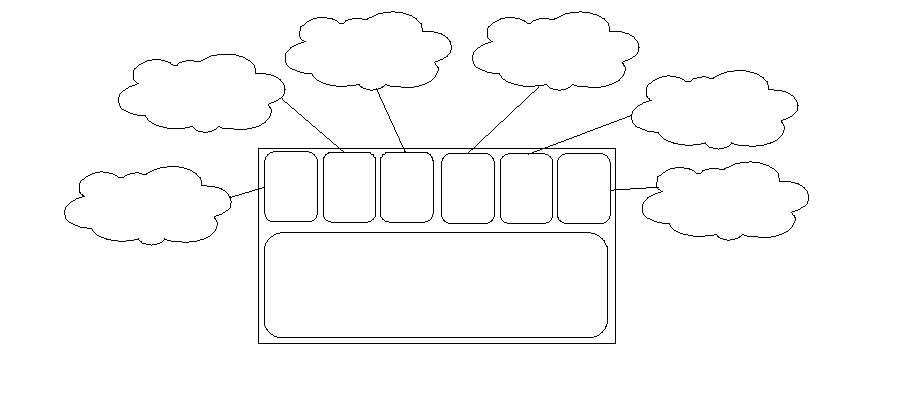
Version 3.1-en Solaris 10 Container Guide - 3.1 3. Use Cases Effective: 30/11/2009
3.4. Multi-network monitoring
Requirement
[dd] A company has several different networks that are separated into several levels either by
firewalls or by routers. A variety of computers are installed in the individual networks. Administration
is to be simplified, and the company would like to be able to "look into" all the networks directly from a
central location and administer without having to connect the networks by routing.
Solution
[dd] A central monitoring and administrator server is installed. On this server, several zones are
created that have each a connection to a network. Monitoring or administration of the computers of
the individual networks is done from the zones. The following details are used in particular:
• Sparse-root zones, that is, the zones inherit everything, if possible, from the global zone.
• All zones use the same monitoring and administration tools.
• Monitoring data are stored in file systems that are shared between zones.
• Data can be evaluated from a local zone or centrally from the global zone.
• From a central location (the global zone), central configuration files can be distributed directly to
all zones or to all systems in the networks. Circuitous paths via routers and firewalls are omitted.
• Routing between zones must be turned off.
• Option: Use exclusive-IP instances.
Assessment
[dd] This use case has the following characteristics:
• The operating division's expenses for creating the zones are low.
• The administrative overhead decreases for systems in the networks since no multiple login via
routers or firewalls must be performed.
• A single point of administration can be created.
• Relief of the strain on routers and firewalls stemming from network load and additional
configurations.
• Use of uniform monitoring tools.
• Use of uniform configurations is simplified.
19
Figure 10: [dd] Use case: Multi-network monitoring
Network C Network D
Network B
Network E
Network A
Network F
Global Zone
System 1
Monitor
A
Monitor
B
Monitor
C
Monitor
D
Monitor
E
Monitor
F


















